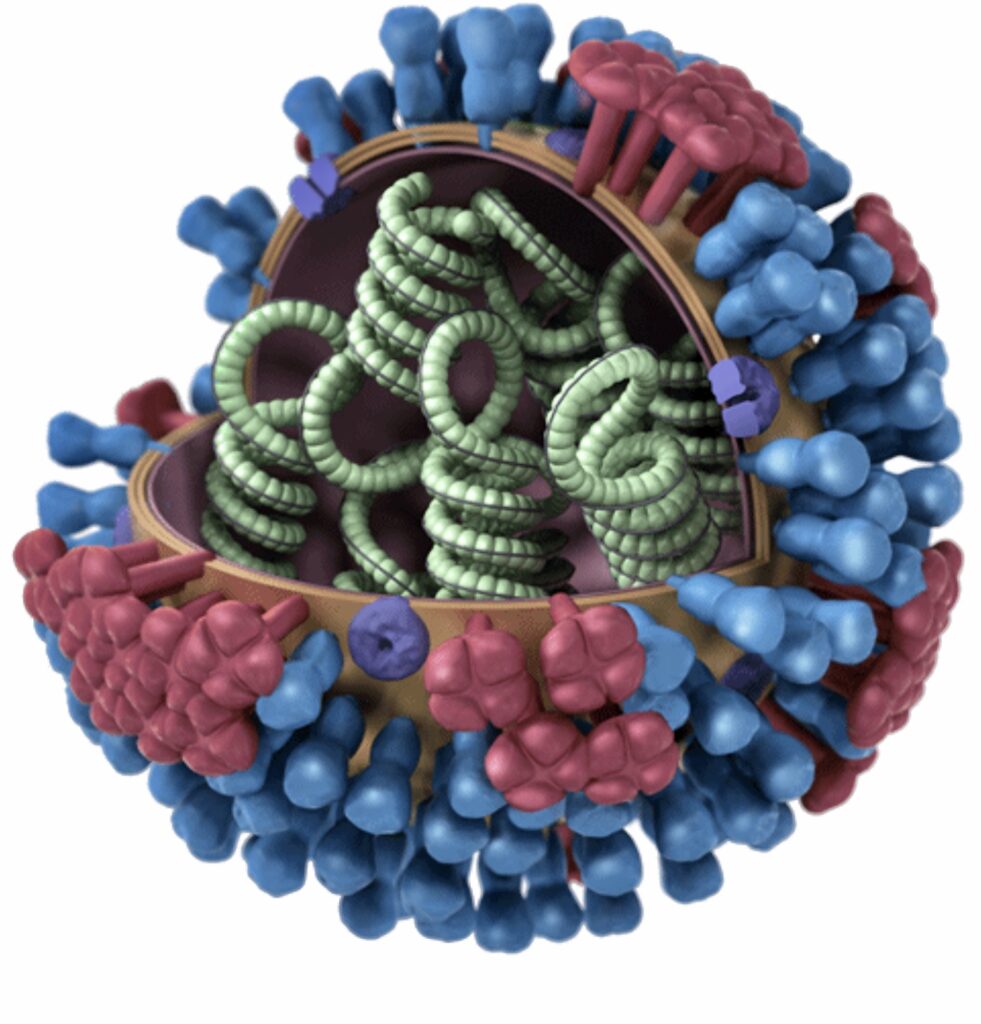By Evangeline T. Capuno
You better watch out. The Christmas season is over but it doesn’t mean you are already safe from flu (influenza, to use its proper name). There is such a thing as seasonal flu.
Data from the Department of Health (DOH) showed there were 193,148 cases of influenza-like illness (ILI) from January 1 to November 25 last year, a significant 50% increase from the previous year with 128,386 cases reported during the same period.
Davao Region topped the list of having the most number with 27,411 cases, followed by Northern Mindanao (24,357 cases), and then Central Visayas (23,470 cases). Also experiencing substantial increase in cases compared to 2022 were Zamboanga Peninsula, National Capital Region, and Cordillera Administrative Region.
Additionally, regions such as the Zamboanga Peninsula, National Capital Region, and Cordillera Administrative Region have experienced the most significant rise in cases compared to last year.
Flu vaccination
If you have not been vaccinated yet against the flu, it’s time to do so. The flu vaccine must be taken two to three months before the onset of the flu season to get the most effective immunity. Studies have shown that flu vaccination decreases the number of episodes of upper respiratory illnesses by 25% to 34%. It also reduces days of sick leave from work due to upper respiratory illnesses by 32% to 43%.
In addition, flu vaccination lessens work absenteeism due to illness by 36%, decreases physicians’ visit for upper respiratory illness by 34% to 44%%, and reduces flu-like illnesses by 25%.
According to the health department, flu season is almost simultaneous with the rainy season and so health experts always advise getting flu shots between the months of February and June. Flu reaches its peak between July and August annually.
Flu vaccination is recommended to people 60 years old and above and those with chronic conditions like lung disorders (asthma, chronic obstructive pulmonary disease, bronchiectasis), metabolic diseases, diabetes and other endocrine disorders, cardiac diseases, liver diseases, kidney diseases, and hematologic diseases.
Flu vaccination is also highly recommended to people with brain, spinal cord injury or trauma, having epilepsy, or suffering from cancer and other conditions which would weaken the immune system. Smokers, too, as they are at greater risk of getting the flu compared to non-smokers.

Side effects
The flu vaccine’s most common side effect is soreness at the vaccination site for up to two days. Some people may experience post-shot fever, malaise, sore muscles, and other symptoms resembling the flu that can last for one to two days.
But that’s much better compared to the complications of flu that a person may experience. Oftentimes, it is more expensive. “There may be expenses for unexpected doctor’s clinic or emergency room visits,” said Dr. Rizal Alberto B. Nolido Jr., chairman of the council on pulmonary infections of the Philippine College of Chest Physicians.
“In severe situations, where complications arise, hospitalization, antibiotics, and measures to stabilize the other co-morbidities will impact on increased health-care costs. There may also be increased expenses, in an indirect way, as when one has the flu, the person may be absent from work for several days,” Dr. Nolido added.
Don’t take the flu for granted. The World Health Organization (WHO) reported there are around a billion cases of seasonal influenza annually, including 3–5 million cases of severe illness. It causes 290 000 to 650 000 respiratory deaths annually.
“Ninety-nine percent of deaths in children under 5 years of age with influenza-related lower respiratory tract infections are in developing countries,” the Geneva-based United Nations health agency said.
Flu viruses
The WHO has identified 4 types of influenza viruses: types A, B, C and D. Influenza A and B viruses circulate and cause seasonal epidemics of disease.
Influenza A viruses are further classified into subtypes according to the combinations of the proteins on the surface of the virus. Currently circulating in humans are subtype A(H1N1) and A(H3N2) influenza viruses. The A(H1N1) caused the pandemic in 2009. Only influenza type A viruses are known to have caused pandemics.
Influenza B viruses are not classified into subtypes but can be broken down into lineages. Influenza type B viruses belong to either B/Yamagata or B/Victoria lineage.
Influenza C virus is detected less frequently and usually causes mild infections, thus does not present public health importance.
Influenza D viruses primarily affect cattle and are not known to infect or cause illness in people.

Signs and symptoms
Flu symptoms of influenza usually begin around 2 days after being infected by someone who has the virus. Symptoms include the following: sudden onset of fever, cough (usually dry), headache, muscle and joint pain, severe malaise (feeling unwell), sore throat, and runny nose.
“The cough can be severe and can last 2 weeks or more,” the WHO said. “Most people recover from fever and other symptoms within a week without requiring medical attention. However, influenza can cause severe illness or death, especially in people at high risk.”
Influenza can worsen symptoms of other chronic diseases. In severe cases influenza can lead to pneumonia and sepsis. People with other medical issues or who have severe symptoms should seek medical care.
Efficient infector
Flu is noted for being an efficient infector. All it takes is one sneeze—and a person will have it. “The virus is spread by inhaling infected droplets that have been coughed or sneezed out by an infected person or by having direct contact with an infected person’s secretions,” says The Merck Manual of Medical Information. “Handling infected household articles may sometimes be responsible.”
Jane Brody in her book, Jane Brody’s Cold and Flu Fighter, writes: “It spreads like a cold, primarily moving from person to person via virus-contaminated airborne droplets released by coughs, sneezes, and even normal conversation. Moreover, like colds, flu can be transmitted by people who have not yet developed symptoms. The incubation period is one to three days, and during that time you can unknowingly spread the virus to someone else. Once flu symptoms develop, you remain contagious for another three to five days.” – ###








